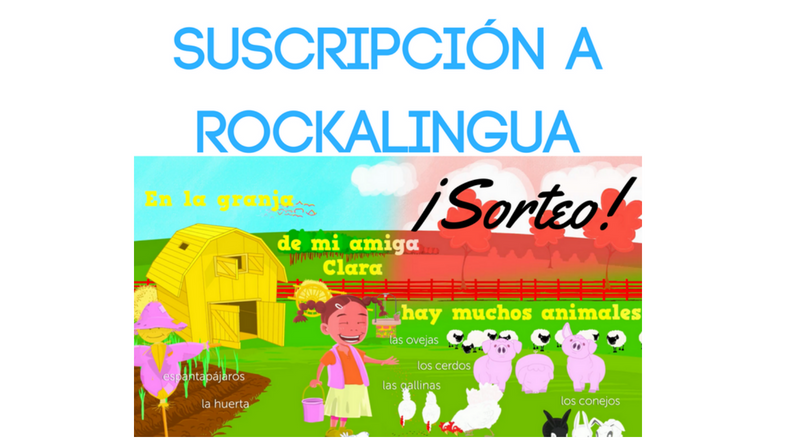Rockalingua was created by an elementary Spanish teacher who really knows the needs of Spanish teachers in the classroom. Cesar and Rockalingua make our jobs as Spanish teachers easier. Rockalingua has engaging songs with different online components to engage students. The videos are appealing to an elementary level audience. They all love the online games! Rockalingua has now added a student tracking system for us for teachers to know how much they have been practicing in our classes and at home! Teachers are now able to print not only supportive worksheets but also stories and flash cards. I am so lucky to be able to host a giveaway where one teacher will get to win a one-year subscription with a full access membership to Rockalingua’s website. Scroll all the way down to participate!
Basic vocabulary and expressions:
Hay: There is/There are
Perro: Dog
Gato: Cat
Cerdo: Pig
Pato: Duck
Vaca: Cow
Oveja: Sheep
Gallo: Rooster
Caballo: Horse
Mi animal favorito: My favorite animal
Materials:
Activities
Introducing the vocabulary: Place cards of different animals in a bag. Invite the children to take turns taking the flash cards from the bag. Introduce the name of the animal and the sounds it makes, one at a time. Talk about their colors. You can also count to see home many animals are in the bag.
You will need to choose the amount of vocabulary you would like to introduce depending on the time and frequency with which you see your class.
Place the flashcards around the room and have the children jump next to the one you name.
You can also make a line with the flashcards and have the children jump next to them while naming them.
Mi animal favorito: Make a chart with the animals and have the children place their name under their fruit they like the most. Talk about the chart with the class.
TPR® (Total Physical Response)
-
- Your students and you can create gestures or movements to go along with each animal.
-
- Play “Simon says”: Play this game and sing the gestures that you and your students agreed on. Have your students make a circle. The teacher or one of the students should be the caller for the game. The caller has to say “Simón dice, “gua, gua, hace el perro” and everyone in class will do the gesture for perro. If someone does something different, then that person will be out. If the caller says “gua, gua, hace el perro” without saying “Simón dice” and someone still does the gesture, then that student will be out of the game. The game continues going until there is one player left.
-
- Play charades: Show the card to one student and have that student show the gesture to the class. Whoever guesses the name of the animal gets a turn.
- Reverse charades: Have a student close his/her eyes. Show a card to the class. The class will show the gesture for the animal. The student has to guess. You can decide on the amount of turns or opportunities you give the student to guess.
Introducing the video: Once you are sure the children know the vocabulary and structures for the song, show the video. A recommendation is to show the video by frames and talk about what students notice in the picture.See the picture below:
More activities: Download Rockalingua’s worksheets and have your students take them home to sing their song to their parents. If you want to assign it as homework, you can ask your students to bring their worksheet back with a parent’s signature, noting the number of times they sang the songs for them.
Have fun singing!







